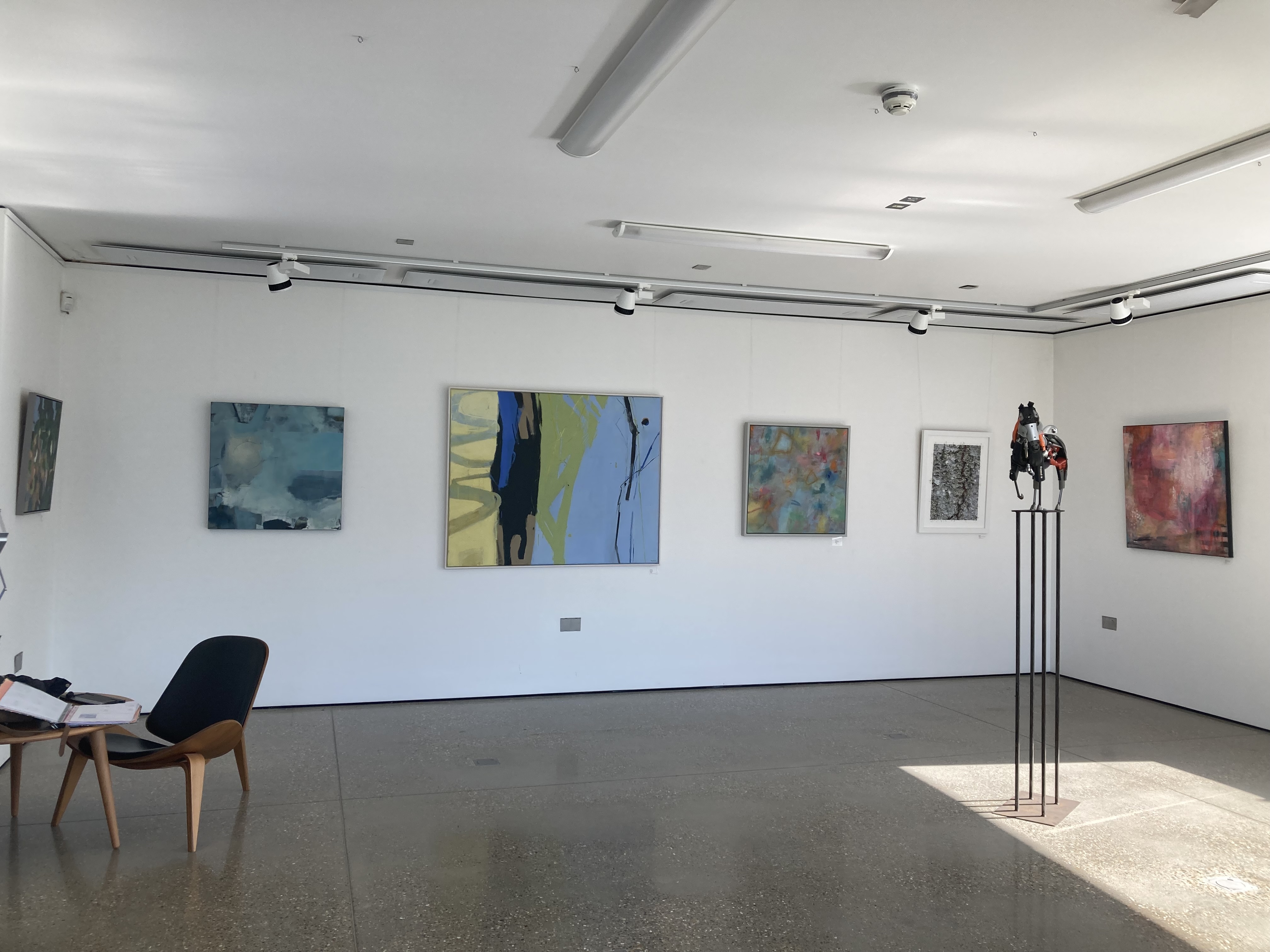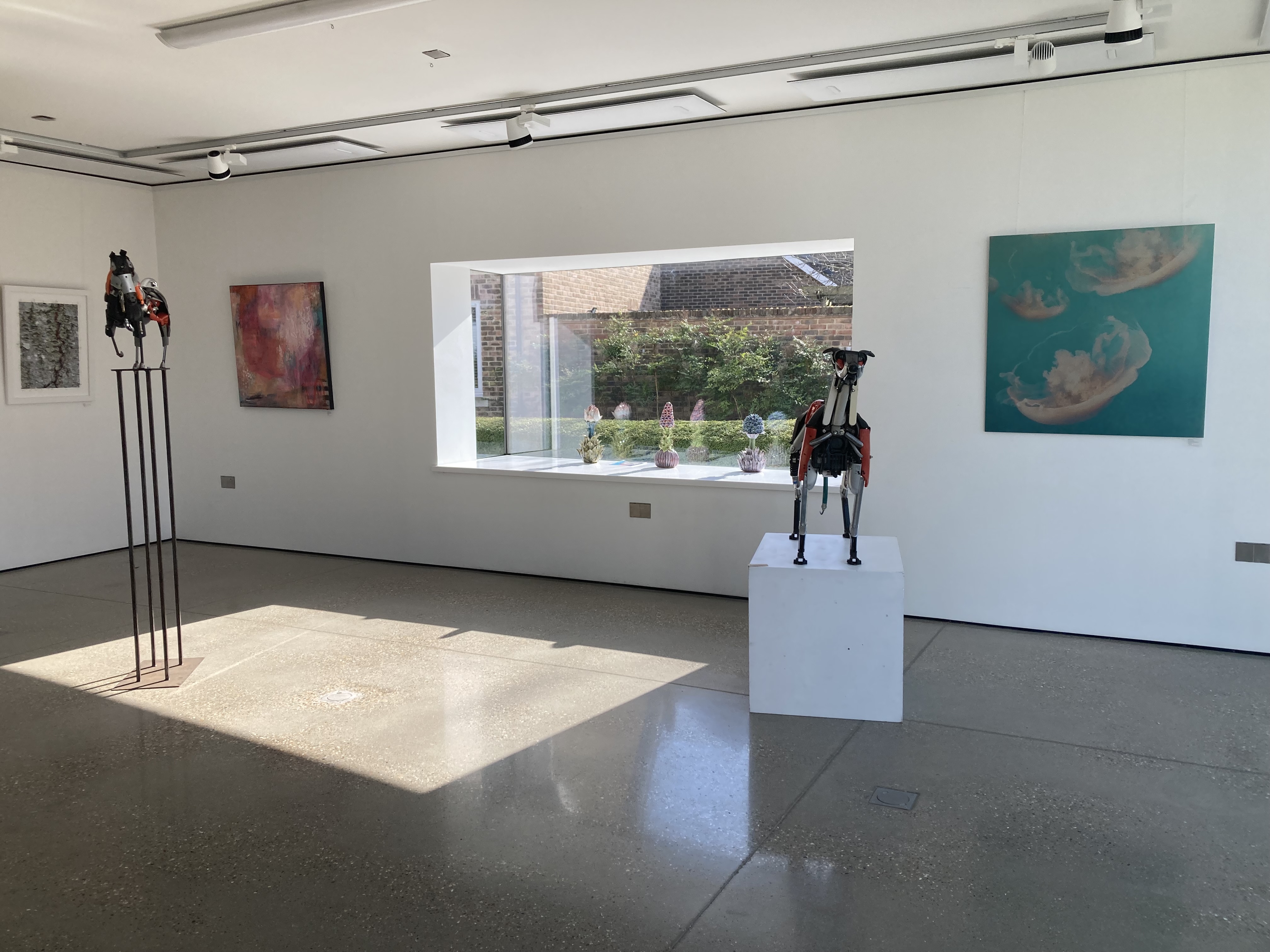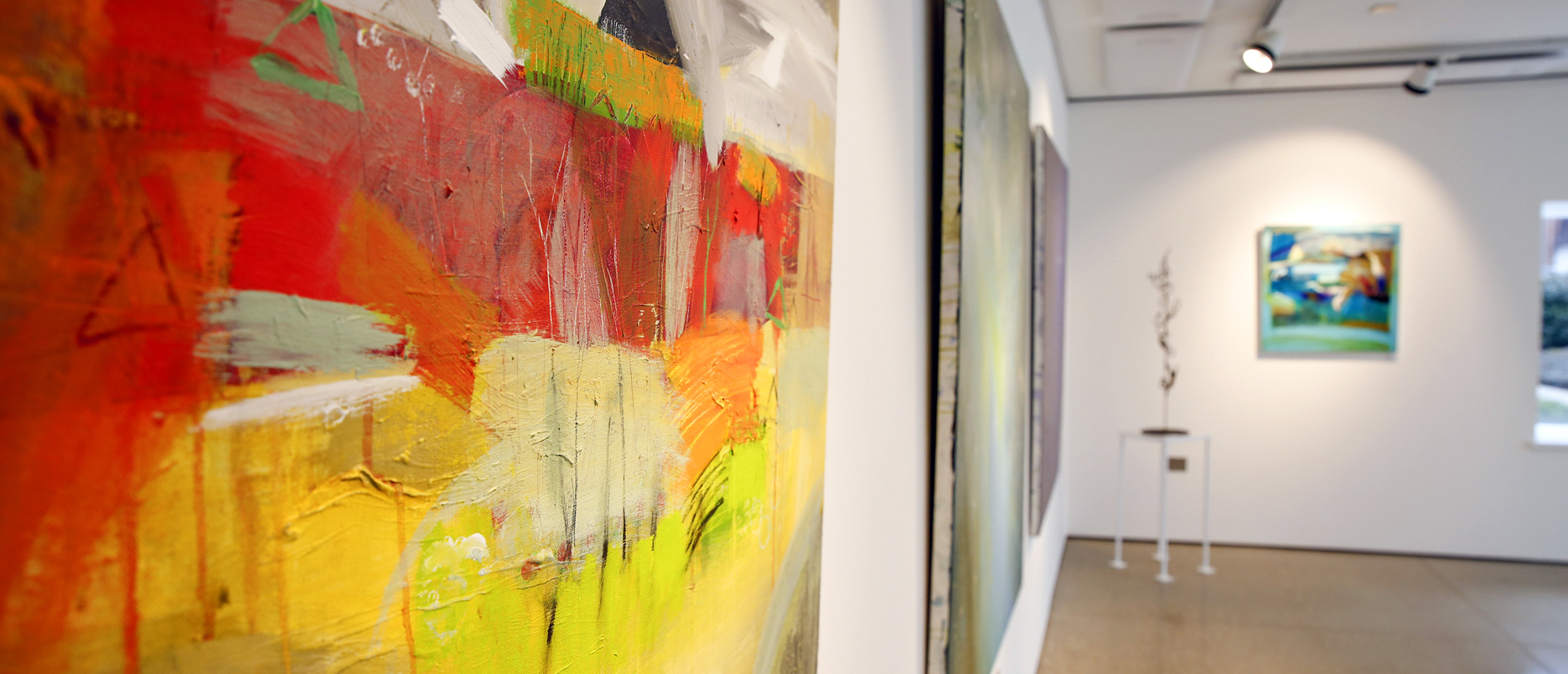
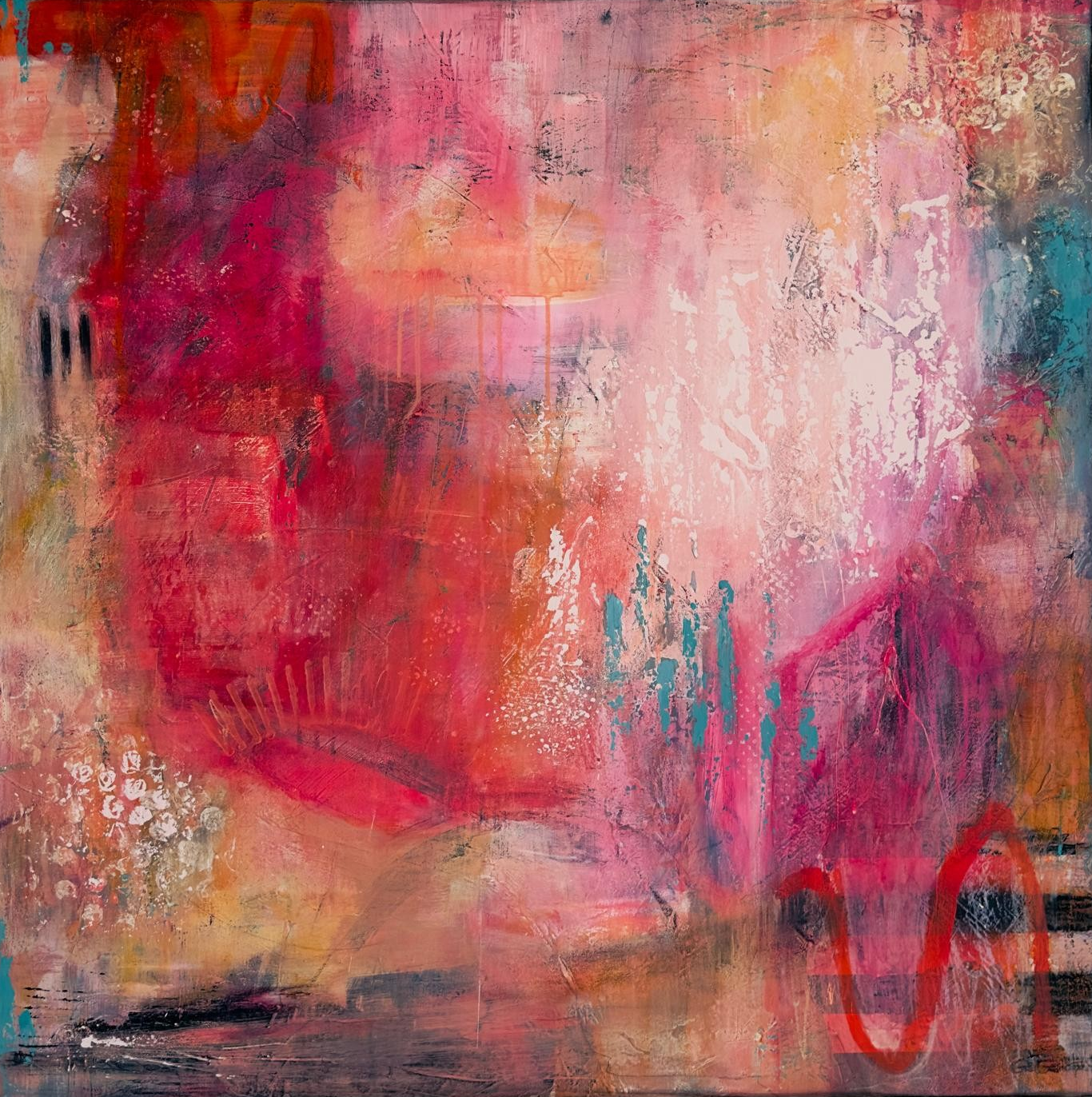
GeGe Hirst
The concept of ‘interconnectivity’ is the main driver behind my art.
A few years ago I came across a quote by Rumi “Do not feel lonely, the entire universe is inside you”. It was exactly what I needed to hear in that moment.
In our challenging modern lives, it’s easy to get consumed in the daily grind and lose perspective of the bigger picture. With increasing isolation and mental discord in our society, it is important to remember our interconnection to one another, nature and the universe.
Through my art, I endeavour to reach others by reinforcing our sense of belonging and appreciating our collective ‘human’ existence.
www.gegehirst.com
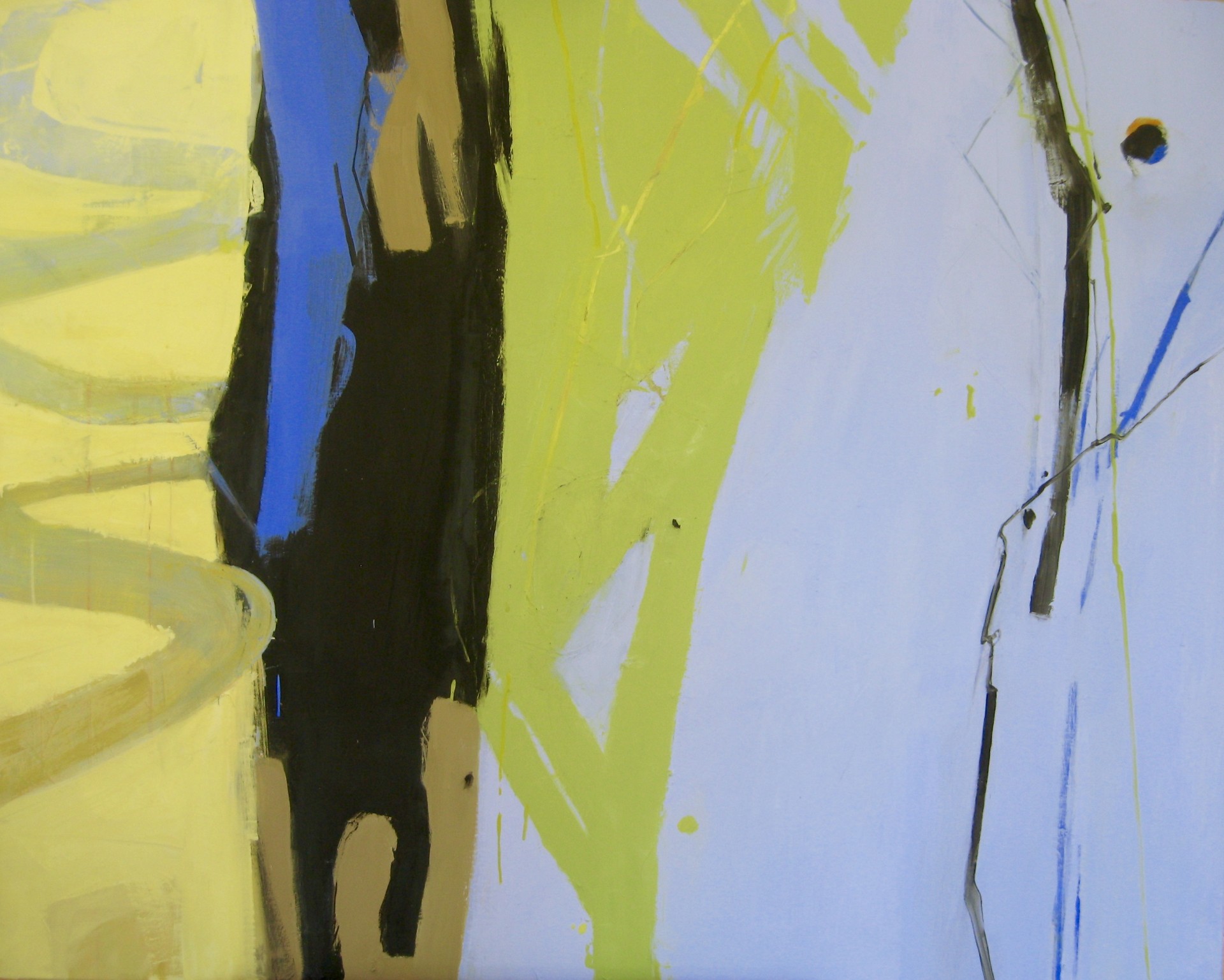
Jane has an Honours degree in Fine Art from UCW Aberystwyth and after a career in publishing returned to full time painting about 25 years ago. She works from her studio at home in Suffolk as an abstract landscape painter working with oils and watercolours.
She has exhibited throughout the UK including Royal Academy, RWA (Bristol), Mall Galleries and Bankside and is an elected member of the Royal Watercolour Society for whom she is currently Education Officer.
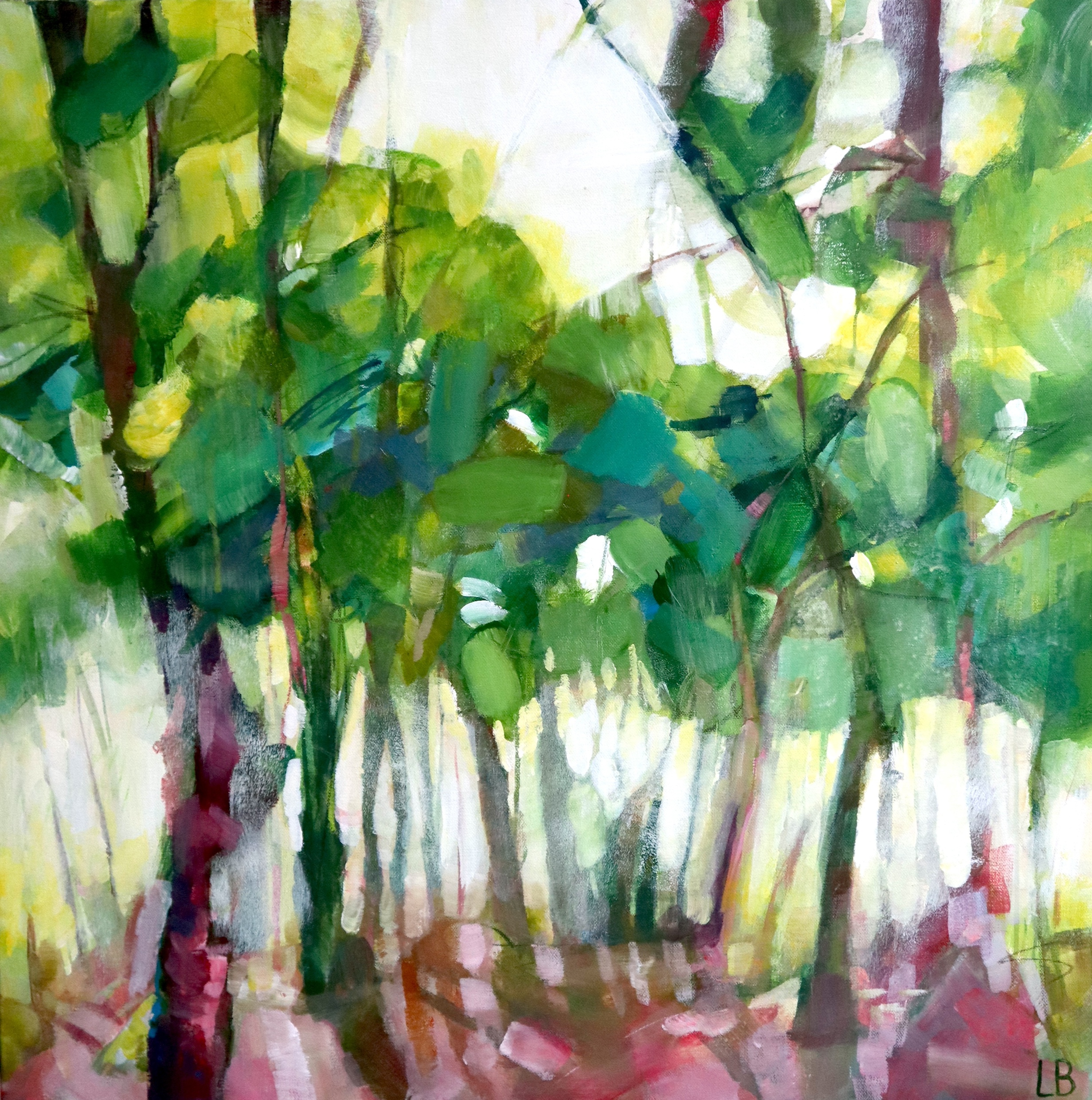
I am drawn to how we as people shape our environment; how we carve out areas of landscape to suit our purposes, and how this sits, often uncomfortably within the natural surroundings. Where urban life meets trees and countryside, human beings and their environment rubbing shoulders. How our towns and cities sit within their environment, houses and dwellings sprawling onto the land, how farmland is cut into the hills, trees cut and planted to our whims.
My recent series of paintings are inspired by the colours and sense of infiltration of harsh artificial light infiltrating the beauty of the natural light of dusk. At this time of day it is often hard to see what is in front of you. Eyes are tricked by the glaring artificial lights and often it is difficult to distinguish what the eyes see. This can be a very uncomfortable experience. Often shapes appear which the brain is unable to make sense of, and despite the allure of the fascinating colour palette, it is a time of day when it is easy to feel uncomfortable, unsure of what is in front of you.
I find my subject matter when I am out exploring either on a run or a walk. I may take some photos and then return later with a sketchbook to collect more information. I make the final painting back in my studio, working quickly, building layers, using acrylic paints for speed. I am trying to catch a sense of a place which is ever changing.
www.lucybristowpaintings.co.uk
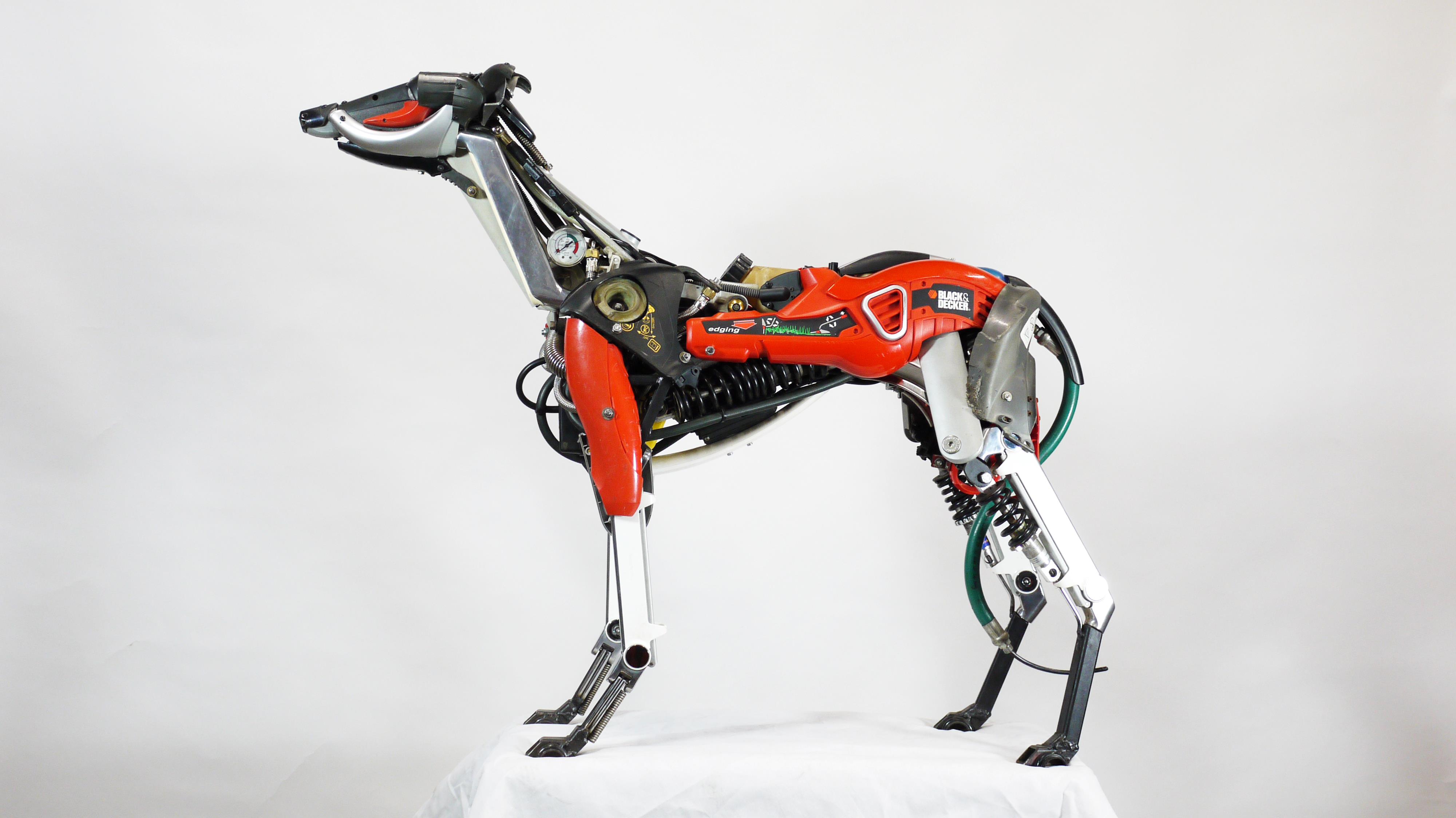
Hubcap Creatures is actually Ptolemy Elrington.
Ptolemy was born in the south of England but grew up in the north. He studied art and design to degree level at Bradford and Illkley Community College in the mid eighties. He has travelled extensively and has worked at a variety of jobs. These have included theatre set design and construction, stage design and construction, assorted large scale community art sculptural projects and all whilst pursuing his own artistic agenda.
Within his work he concentrates on creating sculpture of natural forms from found and re-cycled materials. At the moment he is working with a variety of materials including shopping trolleys, scrap metal and car wheel trims which he re-shapes into a variety of life forms.
Past clients include DEFRA (formerly MAFF), The Eden Project, Kenwood, the R.S.P.B., The Environment Agency, WWF, Essex County Council, Brighton County Council, Ronseal, Anglian Water, East Coast Trains, Ecover, DHL and Flora.
TV appearances include Richard and Judy, Blue Peter, Smart and Art Attack and Collectors Lot.
Printed media appearances include The Times, The Telegraph, The Daily Mail, The Sun, FHM, The Observer and numerous local papers as well as many international magazines and papers.
hubcapcreatures.com

Nadia Attura
Nadia’s works balance between the real and the surreal, transporting us to distant, hazy lands. Vintage, pastel tones and an illustrative approach imbue her works with a dreamlike feel that is further enhanced by her meticulous collaging. Capturing the world through her analogue and digital cameras, she layers fragmented scenes to create her charming imagined landscapes. The images become multifaceted tableaux, combining unexpected objects, settings and colours to construct uncanny depictions of desirable destinations. A journey into idealism and paradise, Nadia applies washes, paints, ink and chalk onto the final edition works.
www.nadiaatturaart.com
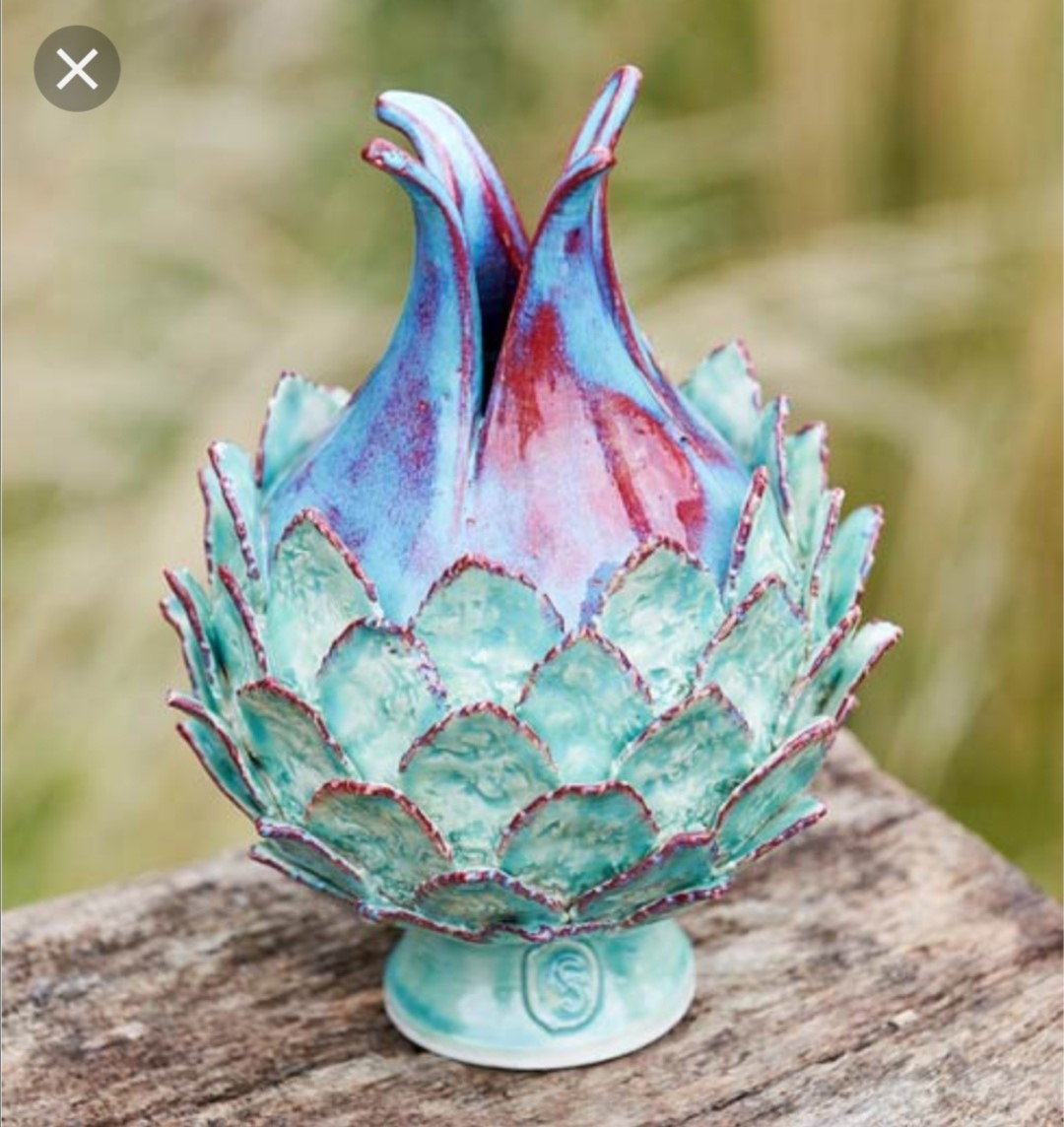
From 1986 to 1996 I owned a restaurant in Brighton and sold it when I became hooked on ceramics at an evening class. So that I could study the subject further. I spent five years at college, studying photography and plastics as well as ceramics. When I graduated in 2001, I took out a lease on workshop premises in Hove, and sublet spaces to other artists/craftspeople. Since then I have exhibited and sold my work at art fairs and galleries throughout the British Isles. In 2004 I won an award for Best Newcomer at BCTF, and have written features for their magazine “The Craftsman’. I took a post grad in teaching and learning in HE, and have worked part-time as a tutor at Northbrook College, Brighton University and HMP Ford.
My inspiration comes from flowers and plants that we see all around us, in gardens, fields even cracks in the pavement. I particularly love the secret worlds inside these flowers, in the patterns and textures hidden away that give a continuing sense of promise and renewal.
Until 2005 my work had been mainly in the domestic & functional arena, but then I decided to work on larger, often one off, sculptural pieces. So far, I have concentrated on the forms of seed pods and fruiting bodies which ties in with my earlier work, but which looks completely different.
I like to play with scale and will often imagine the size that a plant must appear to an insect…what is it about the flower that attracts or repels? Often I will scale my sculpture up so that we can have an ‘insects eye view’ of it.
I work in stoneware, throwing the basic shape of the sculpture, then I alter and model onto it. This gives me a certain speed and control which is the way I prefer to work. My pieces are high fired so that they can go into an interior or exterior environment.
My glazes are chosen to compliment the form and are often slightly chrystalline or irradescent, this makes the pieces glow.


My inspiration almost always comes from nature, which draws me in with its varying colour combinations, forms and movements. I combine my two greatest passions, photography and art, to create something that is truly organic and unique.The series I am currently working on has allowed me to combine both disciplines.
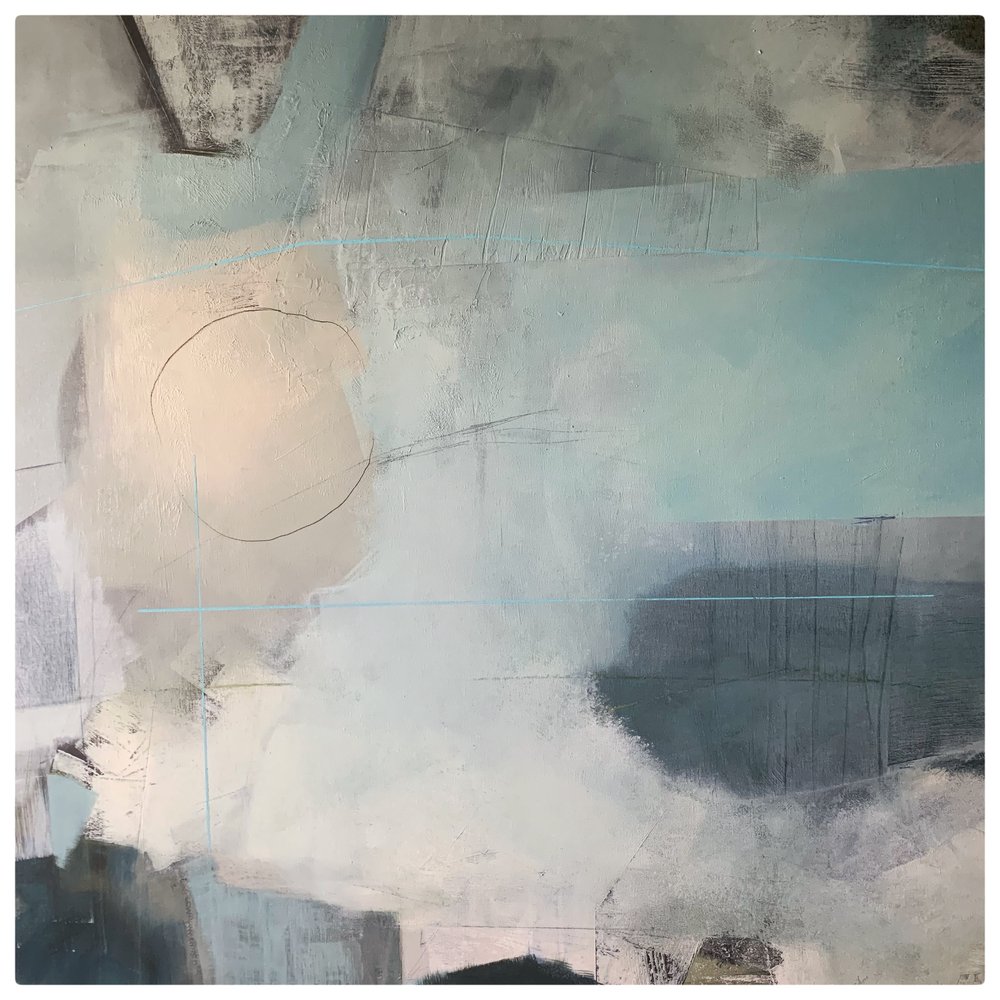
I live and work in Dover, Kent with the atmospheric bands of distinct coastal colours and the hazy sky-line of France not so far in the distance.
I take inspiration from the surrounding landscape: the fragile chalk white cliffs with their irregular strings of sharp flint, shipping lanes which criss-cross the sea, solid wrought iron industrial structures, that are re-shaping the landscape echoing the aspirational needs of communities in the twenty-first century; traces of these linear forms have found their way into many of my paintings.
I am also inspired by what is partly revealed and what remains hidden under the layers of history that lie beneath the coastal paths and local towns: shapes, shadows, remnants of wars and ancient power struggles; the transformative and never-ending cycle of loss and renewal.
In my paintings there are aspects of asemic writing; splintered letters and words. Enigmatic symbols that have been worn away by time or washed by the sea.
Process/Technique
I work in both oils and acrylic, on wood panels or canvas. I strategically build up layers of paint and then excavate back through to reveal aspects of what was once there.
I have a passion for Letraset which I add into and onto the surface of the painting. The quality and feel of the surface is an integral part of my work; some paintings are finished with cold wax layers, others with a matt varnish.
An objective is to create a tension between gestural and controlled marks to bring energy and life into each painting. Importantly, I reference my background in both textile design and art psychotherapy through emotion, active imagination, pattern and design, whilst integrating and exposing different and varying aspects of my life.
